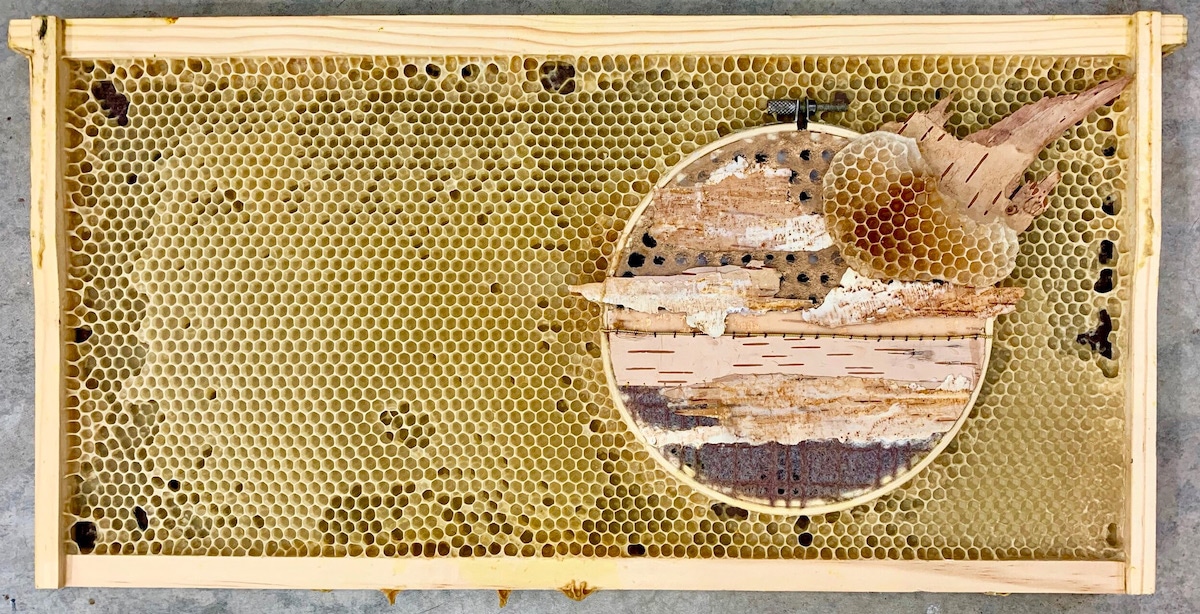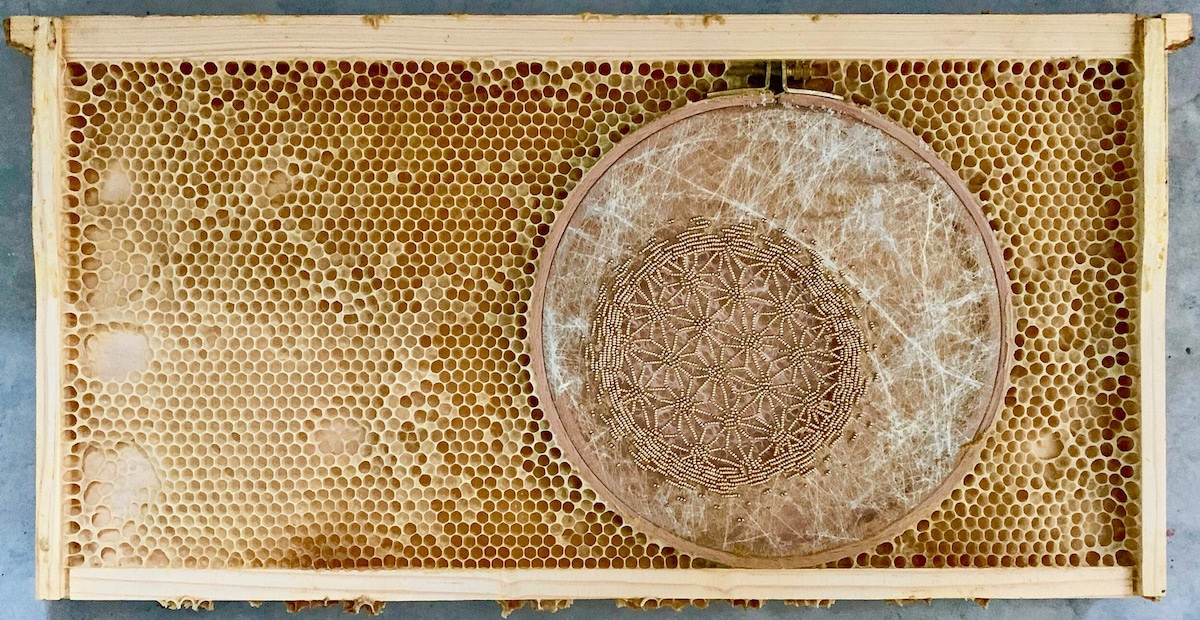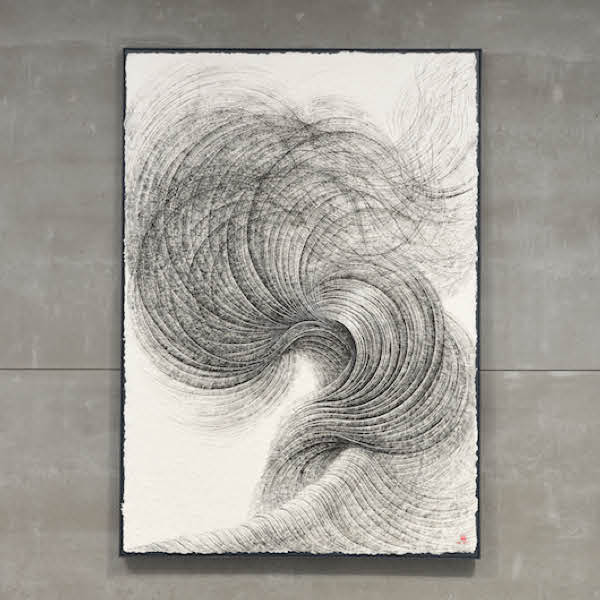
It’s common for artists to collaborate on their work, but Ava Roth puts a new twist on a creative partnership with her mixed media pieces. Rather than having artistic input from those on two legs, she looks to creatures with four wings. Her backyard bees are an integral part of her work as they add their honeycombs around embroidered hoop art produced by Roth that's been set inside Langstroth hive frames (commonly used by beekeepers).
The idea for Roth's beehive collaboration came after her years of working as an encaustic painter—an approach that involves using heated beeswax and adding colored pigments to it. “The urge to collaborate with bees originated with my reverence for the beautiful material I was using,” Roth tells My Modern Met, “along with an increasing awareness of Colony Collapse Disorder and the plight of the honeybee.”
Climate change was also on her mind. “The idea was to celebrate the bees’ delicate work by creating something beautiful and hopeful together, which seems particularly poignant at a time when there is so much despair about the state of our environment. My project is an attempt to re-imagine the possibilities of how humans interact with nature.”
Working with other humans can be tricky enough; above all, effective communication is key. Roth's unique collaboration lacks interpersonal interaction, which is why it has been two years in the making. “It has taken a tremendous amount of trial and error to master all the complex variables,” she shares, “such as what materials the bees respond to and reject (or destroy), how fast to get the pieces in and out of the hive in order to prevent the presence of brood or honey, and most challenging of all, how to ‘communicate’ with the bees about where to build and where not to build comb.”
To help Roth navigate this partnership, she has worked with Master Beekeeper Mylee Nordin, an “indispensable” resource for her. “Mylee has been enormously helpful in strategizing and implementing this project. Through Mylee, I have learned to slow down my own creative process and truly ‘listen’ to the bees. This has been an inter-species collaboration in the truest sense.”
For the past two years, Ava Roth has worked on a collaborative art project with an unlikely creator: honey bees.






























































































